Strategy Makes Success

Photo Finish LaPeirre and ‘MS Dennie MHF’ [Photo: submitted]
What does it take to ride one-hundred miles across one of the most difficult and covenant endurance competitions in the world?
It takes a horse and rider team that unites into one. “For me, I have always thrown myself into endurance riding and horses, it is a part of who I am,” explained the Tevis Cup Endurance Riding 3rd place finisher of Halliday, N.D., Dante LaPierre.
The Tevis Cup Ride is one of the world’s most difficult endurance races. It takes place in California amidst the Western States Trail from Lake Tahoe to Auborn, California. The trails are infamous, not only for equestrian riders but also for elite athletes as a training grounds and location to compete as well.
The Western States Trail Ride, otherwise known as the Tevis Cup Ride, is the oldest modern-day endurance ride and has been in existence since 1955. Each rider who can complete the 100-mile course within 24 hours, whose horse is judged as ‘fit to continue’ and is in sound condition, is awarded a Tevis Cup Trophy.
LaPierre is no stranger to long-distance riding competitions. Growing up in South Africa and riding since she can remember, her horse training and competition journey took her to England and throughout Europe. She also trained with the sheik in Dubai of the United Arab Emirates. Eventually, coming to America and finding a home near Halliday is where this horsewoman took distance to another level.
“I went to my first Tevis Cup in 2019. I was pulled out at mile 85 due to a mild lameness. Veterinarians are at stations throughout the course constantly checking on the health, metabolic rates, and soundness of every horse. I drove all night until 3 a.m. to get home and woke up on little sleep and told my mom, I am never doing this again,” said LaPierre.
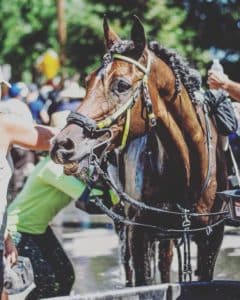
MS Dennie MHF at Veterinary Checkpoint [Photo: submitted]
That thought changed quickly, however, for the devout equestrian. LaPierre said hours later, “No, I’m going to go back, and I am going to win this challenge.”
Through careful study and strategy, the endurance rider came back in 2021 with a top ten finish, placing 8th which is an extremely huge accomplishment in anyone’s eyes, but not good enough for LaPierre. This year in August of 2022, she came home with a record 3rd place finish.
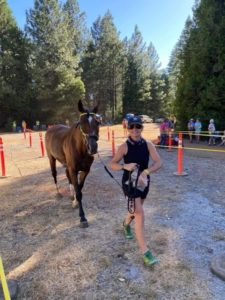
LaPierre and ‘MS Dennie MHF’ Pre Ride [Photo:submitted]
How did the training aspect change from year to year for the rider and her team of horses? “Sometimes, you have to go slow to be fast,” stated the equestrian. “I put more time into myself getting in shape and lost 52 pounds. If I was going to compete against athletes, I had to be one as well. I did a lot more interval training on my horses. Knowing from experience, we had to beat the other horses in their holds and have a low enough resting heart rate to be able to get back on the trail quicker than the other horses,” added LaPierre.
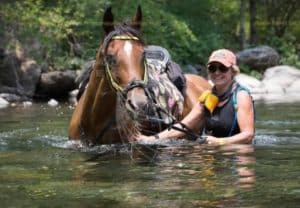
Extreme 100 Miles [Photo: submitted]
Focusing on three main principles of training for her horses: their heart, lungs, and legs. All of this has taken years of training and evolution to build a horse strong enough to withstand the rocky ground, mountainous terrain, and heat in the infamous hundred-mile race. She conditions her horses by riding 60 to 80 miles per week, allowing one day for schooling to supple and strengthen their back and body. She rides French and Polish bred Arabian horses.
The training strategy and ‘lifetime’ of riding across some of the most dangerous lands across the world made for a stunning combination. “It takes a good horsewoman to make an average horse good. It takes a good horsewoman and more study and work to make an average horse great. That is the challenge that keeps me going.”
Through the winter months, LaPierre said she looks at it as her time to crave the riding more. She works on keeping herself fit at the gym and allows her horses a mental and physical break. The time off makes the whole team have the desire that much more when the days start getting longer in the spring.
This year’s endurance ride in California went exactly as planned according to LaPierre. “I kept our pace consistent and steady through the first 70 miles and kept getting passed at vet check points. Right at mile 70, I felt my horse kind of pulling on me and wanting to go for it, so something told me, this is it, it’s ok, let her go. When you ride this many miles with a horse and during these races, you and the horse become one. Then, everything just happened.”
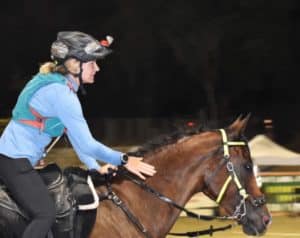
Riding into the Dark [Photo: submitted]
After the top three finish, everyone has asked the rider, what’s next, who is your competition?
LaPierre affirmed that her only competition is herself and she wants to go back and beat her time and aims to win. “I get goosebumps just talking about it. The more you realize you must push through challenges and keep going and working hard no matter the weather, or the way you feel that day is a quality we can use in anything. It’s a skill in life we can use any place —just push through, take a chance, never give up — any person or child can benefit from that,” LaPierre added.
LaPierre is passing down her knowledge and legacy to her daughter, Katya, 11. The mother-daughter and team of horses are heading to their last competition this weekend south of Minneapolis, Minnesota. “Katya will compete on each day aiming to complete 50 miles per day. I have warned her about the chilly mornings and the increase in temperature through the days, and we are prepared for the extremes. I encourage her to take chances, maybe it will work out and maybe not,” stated LaPierre.
While the mother encourages her daughter to push through the challenge and never give up, she is giving the best gift a mother and competitor can teach a child. The ‘no quit’ attitude is a quality that can carry anyone through life.
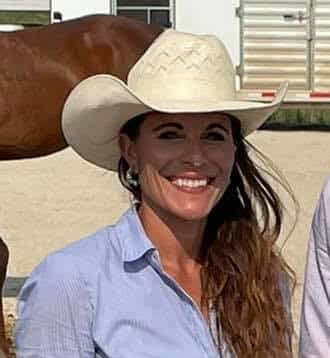
Tisa Peek is a long-time horse trainer, competitor in barrel racing and team roping, and writer about the equine. Rodeo and horses run deep in her roots. JT Family Equine is where she calls home, south of Bismarck, ND. Tisa, along with her husband, Jon, and boys, Blu and River, train horses and host clinics. Tisa is the host for Dakota Cowboy on BEK TV.
